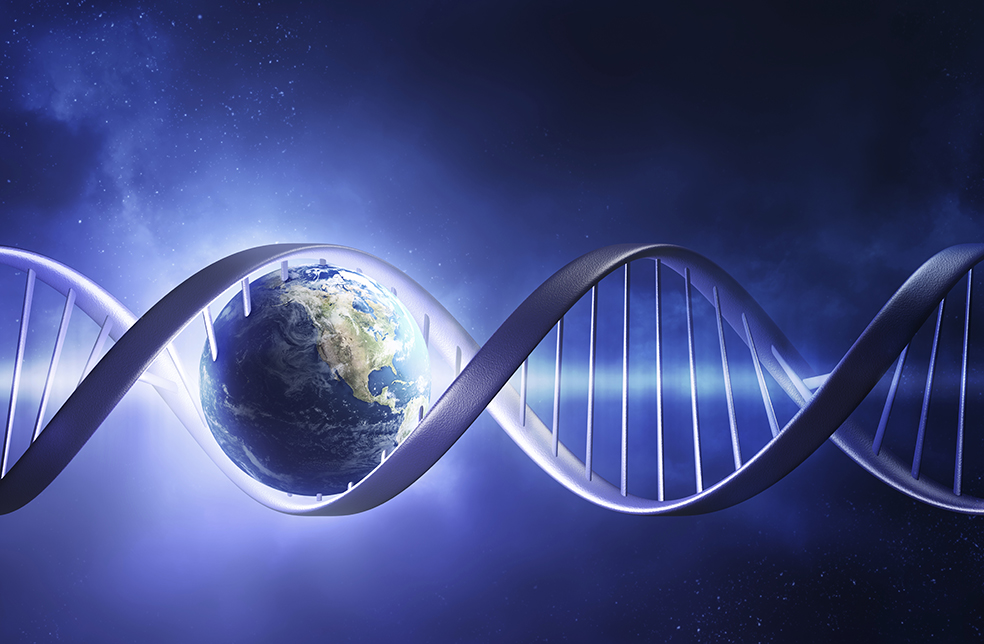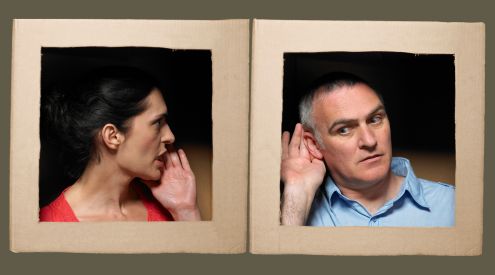What your DNA can tell you
An interest in her ancestors led Clem Felix to look into her genetic profile, an adventure which took her further than she imagined possible. Here’s why you should dig into your DNA…

My father’s family is well charted – they are from the north mainly, farmers and teachers and even (via a distant branch) an illustrious pioneer of the Industrial Revolution whose picture is in the National Portrait Gallery. But my mother’s story is more mysterious. She was adopted, and while we have some information about her birth mother (either first- or second-generation Italian immigrant), we are unsure – ahem – about her father.
Where others may scour online ancestry sites to build a family tree, I’m interested in a different route. How much can increasingly sophisticated DNA technology tell me about my recent and deeper past? Clues are embedded in my double helix – like microscopic fossils and notches – but what can they tell me?
The Genographic Project was set up by National Geographic 10 years ago to ‘help answer fundamental questions about where humans originated and how we came to populate the Earth’, and continues to extend its possibilities as technology rapidly develops. It promises information about my deep and recent ancestry, plus I’ll be contributing to a historic project tracking the story of humans across the globe. So far, 700,000 people have taken part.
I buy the kit and send off my DNA (from a simple cheek swab) and a few weeks later, I get my answers.
DNA discoveries
First I look at my deep ancestry, which stretches into prehistory. Our double helix is a random mix of our mother’s and father’s DNA, which creates a vastly ranging potential genetic inheritance that explains why the characteristics of siblings can be so different.
But one part of the code, mitochondrial DNA, is passed on unchanged from mother to daughter, and on down the female line. (The Y chromosome is similarly passed on unchanged from father to son.) The only change comes with mutations, which happen rarely and appear as markers on the genetic material. By tracing these, the analysts can track my ‘tribe’ through history.
Going back into my deep history, the first thing I discover is that my basic mitochondrial DNA is the same as in every other human on Earth, as we’re all descended from one woman, known as Mitochondrial Eve, who lived in Africa about 180,000 years ago. For me, this is a truly mind-blowing idea – that if it were possible to trace the family tree of every person in the world back 180,000 years (a blink of the eye in terms of the Earth’s history) we would come to a point where we are all siblings. No wonder that spiritual ideas of brother- and sisterhood have such deep resonance for humanity.
Markers and branches
Markers on mitochondrial DNA effectively show branches of the human family, and the next important marker on mine is called L3. My L3 ancestors literally branched off – these were the first humans to move out of Africa around 68,000 years ago, and they headed north across the Sahara.
Then comes a split – M and N – and these two groups went on to populate the world, moving north and east. I belong to the N branch (or haplogroup), which settled first in the eastern Mediterranean and western Asia, where they co-existed with other hominins such as Neanderthals, before eventually moving onwards. Today, Ns are especially prevalent in Europe.
My final haplogroup marker is W. This dates back to between 8,000 and 20,000 years ago, and although found throughout Europe and Asia, is rare and only appears in very low numbers. I’m fascinated to know more about W, as this is the closest I can get to my hereditary ‘tribe’, so I speak to Miguel Vilar, science manager of the Genographic Project, who confirms that ‘W seems to occur in the majority of European populations but at less than one per cent, a very low percentage’.
With some of the more common haplogroups – where you find high densities in specific areas – it is easier to align these tribes with particular population movements and even particular skills, for example the migrations after the last Ice Age, when tribes with skills in farming, metal and crafting migrated to Europe. But where does that leave me? When did my ancestors come here?
‘My thought is that W is probably an old lineage in Europe, that most likely existed on the perimeter of populations, and was there longer than something that was associated directly with a historical event,’ says Vilar. ‘It suggests to me that it probably came in prehistorical times.’
From this, I imagine that my ancestors came to Europe pre-farming, as predominantly hunter-gatherers, in small groups or as lone wolves. Is it a coincidence then that I am not a group person? That while I live in communities, I generally feel and position myself more on the edge of things?
Detailed analysis
Vilar is able to access more refined results for me – a level of depth now available to all Genographic Project users. He discovers that I belong to a particularly rare branch of this rare branch – I am a W7. ‘W is rare, W7 is even more rare,’ he says. ‘On the database I was able to find it in one or two people in Germany, one in Denmark and one or two in the Middle East, including Armenia. It is a lineage that has survived for tens of thousands of years, always as a minority lineage.’
Apparently W7 was only identified a couple of years ago, and over the coming years science is likely to be able to tell us much more about my tribe – and all the others. I imagine we will see online haplogroups spring up as members of ancient clans set about finding each other.
The second section in my results is even more extraordinary. This is my hominin ancestry, which tells how my ancestors, on their journey away from Africa, interbred with other species of hominin, such as our extinct cousins, the Neanderthals and more recently discovered Denisovans. Our ancestors who left Africa lived alongside these for thousands of years.
My results tell me that my genetic code contains 2.8 per cent Neanderthal, and 3.1 per cent Denisovan, which seems to me a huge amount, but Vilar tells me it is average for a European. All non-Africans carry traces of these ancient cousins.
Speculation on the story
Naturally, my imagination runs with this. How did these matings come about? Was it a one-off or did it happen many times? How does my inner Neanderthal represent herself?
Vilar explains that much of the story underlying these results is still speculation, but there are some conclusions he can draw. ‘Given that this is happening tens of thousands of years ago, in order for us to even see it in your DNA these matings must have happened several times throughout several millennia. But we would have to look at the DNA from dozens, if not hundreds, of Neanderthals for the exact number, and we’re not quite there yet.’
Sadly, it seems unlikely that these couplings were the results of a romantic courtship. ‘These would have been hunter-gatherers, they would have been competing against each other, and – in many cases – they would have fought each other. So, the males of one group kill the males of the other group and the women survive and then interbreed with the newcomers – we suspect something like this would have happened,’ he says.
So it wasn’t a love story, but still it is deeply moving to me that these extinct species live on in my DNA, possibly visibly so. While it is tempting to ‘see’ the Neanderthal in some people we know (apparently when early research in this area was first publicised, wives wrote in asking for their husbands to be tested, thinking this explained everything!), the reality is likely to be more subtle. ‘There are some traits that possibly were not associated with the first modern humans and may have come in through Neanderthal/Denisovan,’ says Vilar. ‘For example, lighter-coloured hair – we know if modern humans arose in Africa they probably had darker skin and hair, and a lighter-coloured hair may be associated with Neanderthal or Denisovan. But we don’t know for sure.’
More recent history
The last set of findings in my Genographic Project results brings us right up to date, and analyses the last six generations in my family line – 64 parents and grandparents going back the years, each of whom contributed around two per cent to my DNA.
As this is a geographical project at heart, the analysis of my DNA is matched to different ‘typical’ populations, to see which resembles mine most closely. For example, most Europeans are a mix of northern European, Mediterranean and southwest Asian ancestry, but the relative proportions of each places that person in a particular European country. So a typical British person has a majority northern European reading (average 49 per cent), a secondary Mediterranean one (33 per cent) and SW Asian (16 per cent) as the minority – each of these reflecting age-old migrations, but in total giving a snapshot of the present-day population of any country.
My result shows a higher Mediterranean reading than this, and lower northern European, which equates (according to the computer analysis) to two dominant populations – the UK first and Greece/Italy second. Which, given what I know about my ancestry, is spot on. Filling in the gaps, I surmise that the missing grandfather was probably British, as we’d been told.
But after all of my learnings – after this huge sweep of my deep origins – my recent history has come to feel of less importance. Overwhelmingly, what my research has shown me is how little recent connections, and membership of notional modern nationalities, really matter in relation to these deep connections, and not only to my species but other species, too.
After all, if that family tree of mine were to continue back beyond Mitochondrial Eve into deep dark history, and could show every ancestor of mine, it would stretch back to the very beginnings of life itself, to the first single-cell organism that sprang into life in the oceans, and from which I, and every human and animal and plant and insect and bacteria on Earth is descended. In the end, science is showing us, however much we want to identify with a tribe or a species or a nation, we’re all part of one family – all brothers and sisters under the skin.
To find out more information, or to take part in the Genographic Project, visit genographic.nationalgeographic.com. The kits cost $199.95 (approx. £130), and can be purchased from shop.nationalgeographic.com
Photograph: iStock







